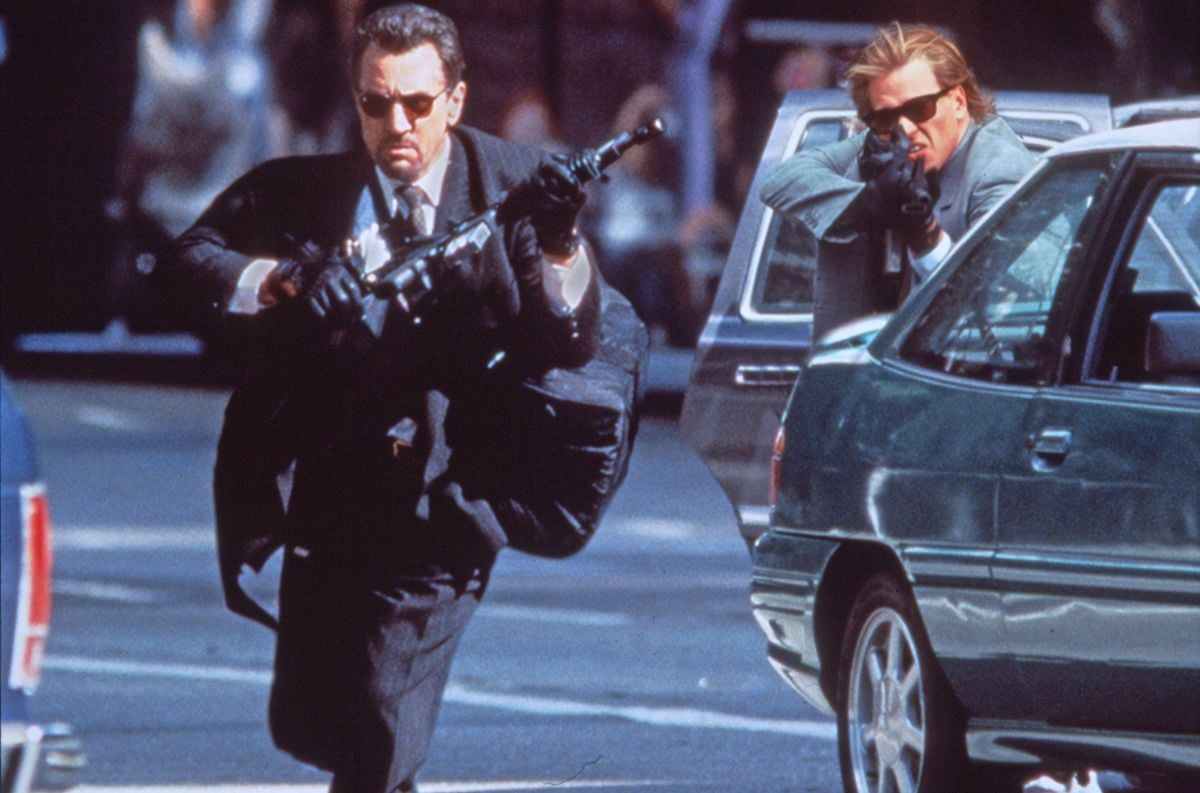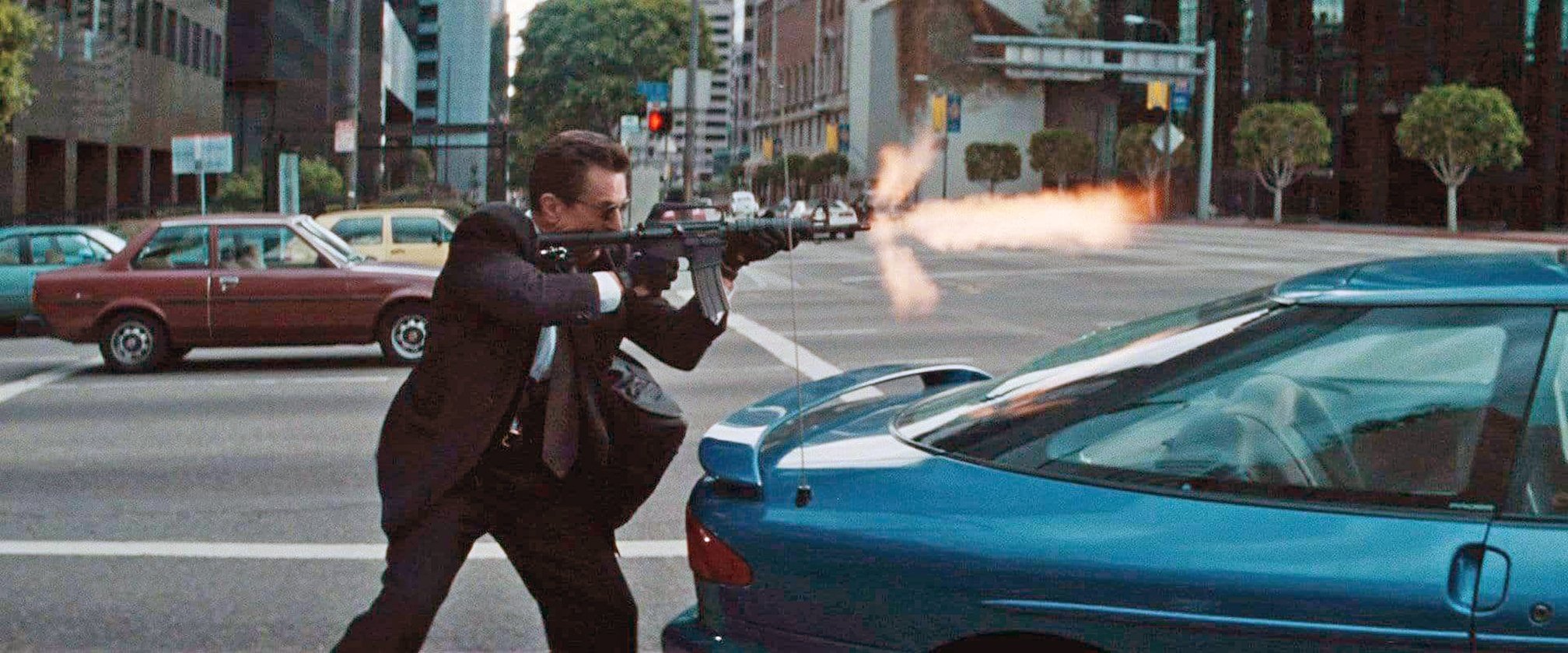
Hot Set: Shooting Heat
Director Michael Mann and Italian cinematographer Dante Spinotti, AIC transform the mean streets of Los Angeles into a deeply-hued crime milieu.
This article was originally published in AC Jan. 1996.
Unit photography by Frank Connor.
“Like no other art form, film lives on reality,” says Dante Spinotti, AIC, the director of photography on Michael Mann's latest film, Heat, a crime thriller that showcases first-time co-stars Al Pacino and Robert De Niro, along with Val Kilmer and Tom Sizemore. "The more you believe an act happening on the screen, the more you believe the story, and the more successful the communication will be between the storyteller and the audience."
The cinematographer also followed this philosophy while shooting Mann's two previous feature efforts, the lush period adventure The Last of the Mohicans (which earned Spinotti an ASC Award nomination) and the stylish serial killer thriller Manhunter.
Spinotti grew up in the northern Italian Alps before being sent to Kenya to do odd jobs for his uncle — a cinematographer. Learning the craft, Spinotti's subsequent operating jobs back at RAI in Rome helped develop his cinematic acumen. Freelancing and hoping to break into the Hollywood arena, Spinotti was offered his chance by famed producer Dino De Laurentiis, resulting in his collaboration with Mann on Manhunter. The cinematographer's credits also include Beaches, The Comfort of Strangers, Crimes of the Heart, Frankie and Johnny and True Colors.
“I see a tendency not to light individual shots, but rather areas of the whole scene. This is so cameras can shoot from different angles at the same time for cutting dynamics and the actor’s performances.”
– Dante Spinotti, AIC
His third pairing with Mann, Heat examines life and crime in Los Angeles at close range, following the story of LAPD Lieutenant Vincent Hanna (Pacino) who confronts Neil McCauley (De Niro), the ringleader of a group of professional thieves. Using an approach based on strict realism, Mann takes this material and transforms it into images consisting of abstract elements which support the film both visually and emotionally. "It's a little like being in front of a Caravaggio scene and changing it into a Kandinsky painting," explains Spinotti of the director's visual process. "This is achieved by a very accurate control of the dynamics of the composition, and the use of lenses and camera moves, set design, set dressing, costume design, hair, makeup, props and the color of the light — which is widely discussed and tested in pre-production. This intense pre-planning, which will find its way into the editing, is the foundation."
Since most of the film takes place at night, Spinotti shot some comparative tests with ENR processing on the positive print at Technicolor Labs. "John Bickford printed some incredible images of downtown L.A. at night," he explains. "With ENR, the blacks are deeper and the whites are whiter. The process allowed us to time up the positive three to five points, as if the shadows became one full stop brighter. The streets of L.A. at night, shot without any artificial lighting, had a glow which recalled scenes from Stanley Kubrick's Barry Lyndon, which was shot in candlelight with a lens T-stop of 0.7."

However, the process system, invented in Italy by Technicolor timer Ernesto Novelli and often used by Vittorio Storaro, ASC, AIC as a necessary complement to his lighting, slightly desaturates color, which can cause a problem if one needs the full red-blue-green range. "Because of this desaturation, we decided instead to shoot the movie without using ENR," Spinotti explains. "But still, these bright-dark images stayed in my mind as a guideline to the lighting of the city at night."
Liking the hard visual edge it would add to Heat's dark story, Spinotti chose to use Kodak's 500 ASA 5298 stock for the entire film. He explains, "I pushed the film one stop for night exteriors and interiors. This allowed me to have the downtown backgrounds at some level of brightness — shooting at T2 on Panavision's Primo lenses — and have some extra brightness when needed using the excellent [Super High Speed] T1.1 50mm lens." He actually set the exposure on the 50mm at T1.4 to correct some lack of sharpness on the top and bottom of the anamorphic frame.
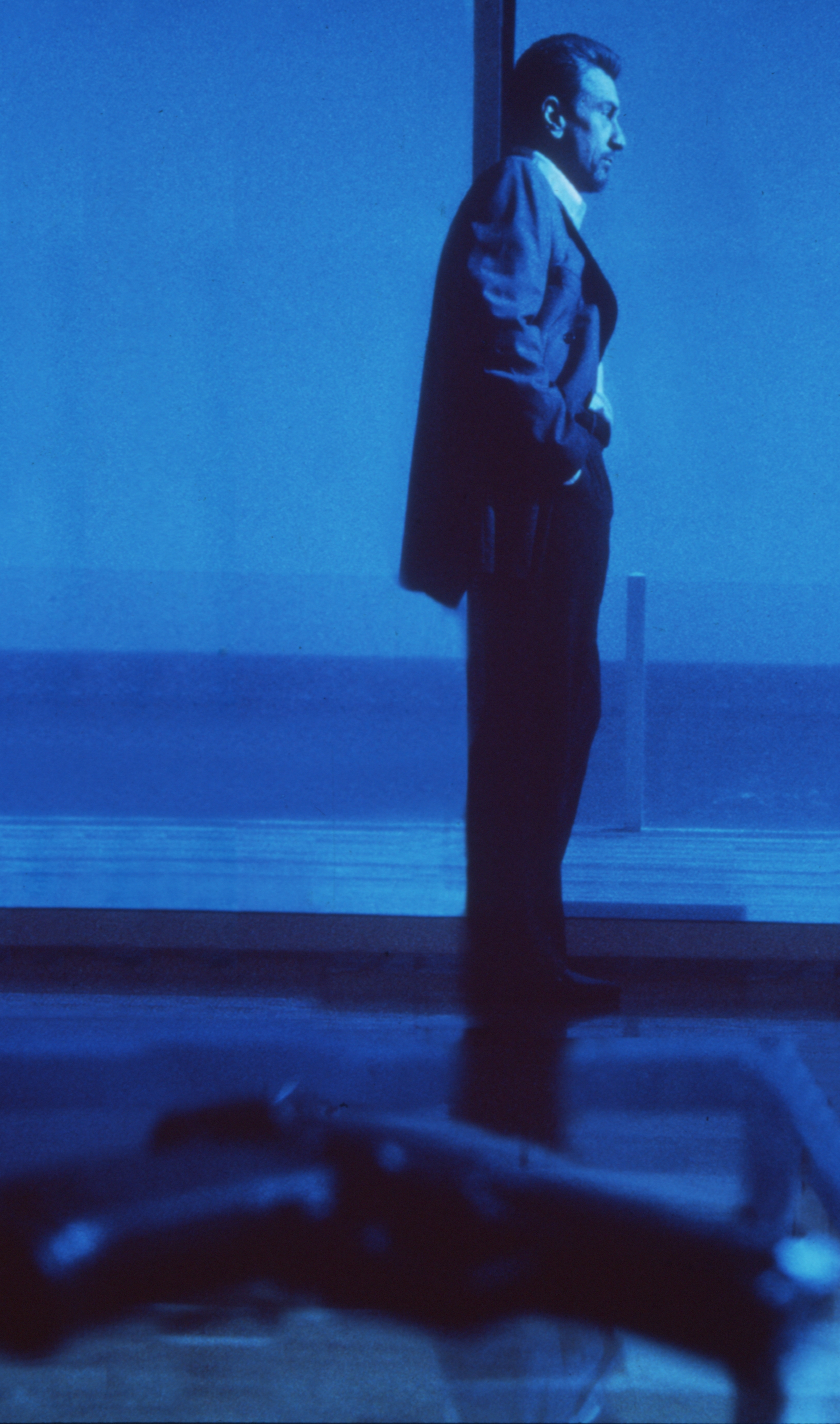
"At 800 ASA, I also didn't need to increase the light dramatically on given shots at night when we needed longer lenses, such as the [E-series] 180mm at T2.8; the 400mm at T3.5; and the [11:1 and 5:1] zoom lenses at 5.6," he continues. "For day exteriors, most of the time we had to complete shooting late in the day, when shadows from the buildings and the use of long lenses or zooms required a high-speed film anyway. Because of its low grain and color, the 5298 enabled us to use it throughout the day without having to change film stock when the light went down. Pushing 5298 one stop does not give me heavier grain or contrast than, say, the old 5296 [when exposed normally.] And one more stop is a major advantage on a movie that is shot almost entirely on location."
Remarking on how the anamorphic format also helped reduce grain, the cinematographer observes, "The bigger area of the negative makes this choice really useful."
Spinotti shot the tungsten-balanced 5298 in daylight without 85 correction filters, explaining that this gives him an extra edge on the brightness of the blue-greens, while still keeping the whites and grays very clean. It also forces him slightly off the stock's standardized color palette.
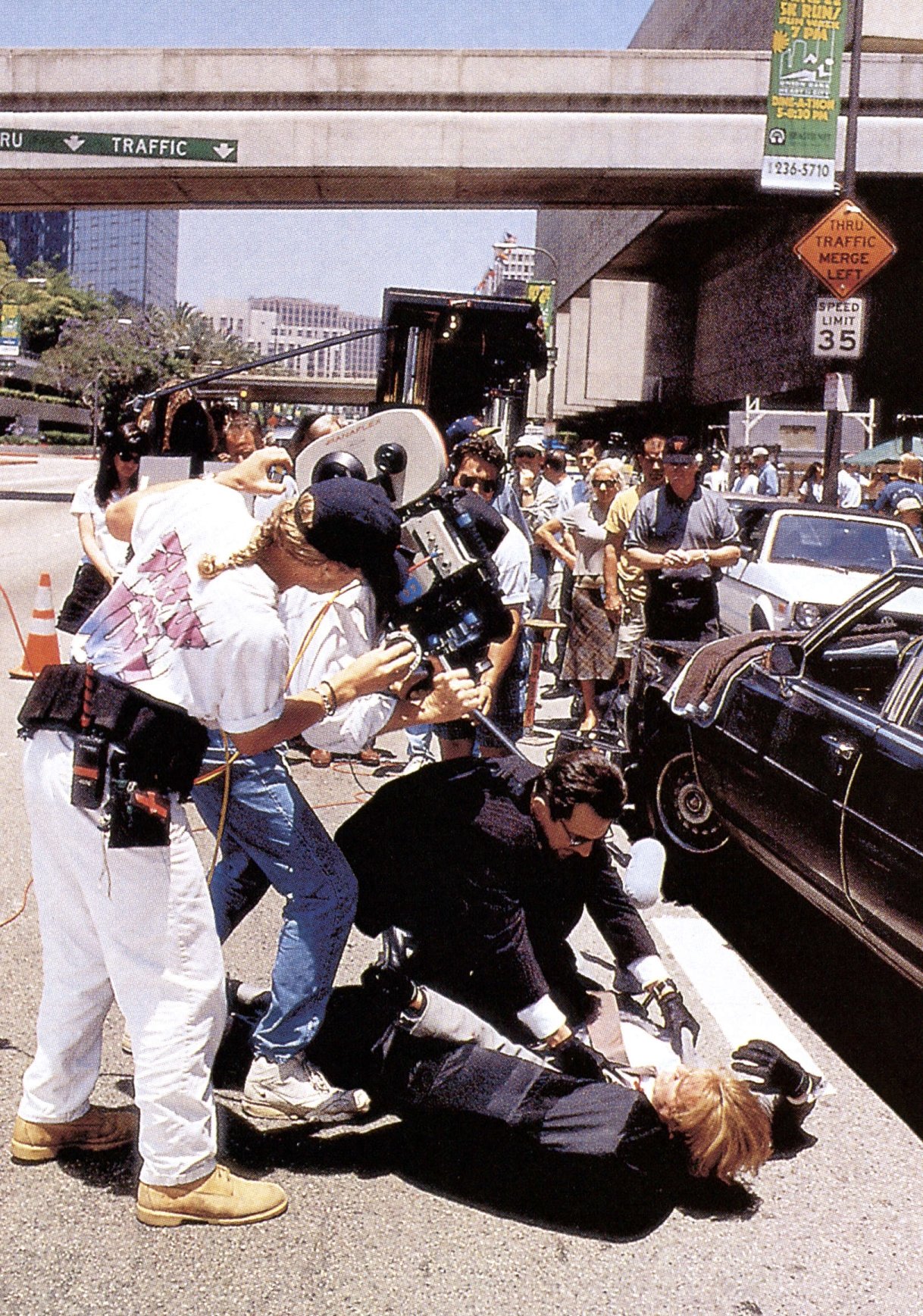
For one of Heat's late-night robbery scenes, shot downtown in L.A.'s commercial area, the crew filmed exteriors using multiple cameras aimed at various angles. The area itself was generally lit by yellow sodium street lamps. "Period movies are simplified in the light sources — the sun, the moon, oil lanterns, bonfires — whereas modern films are lit by a number of sources," theorizes Spinotti on the issue of natural lighting environments. "Sun reflects on the glass walls of tall buildings to create rays coming randomly from different angles. At night there is an abundance of fluorescents of different colors and tungsten luminaires of many shapes. The city streets are lit by yellow sodium lights, blue-green metal-halides and the older green mercury-vapor lamps."
To supplement these existing sources, he used "a combination of 10Ks or Par lights on Condors, or even Dino lights, set low on a dimmer to match the color of the sodium light. If more intensity was needed, one layer of Rosco CTS again brought the color temperature down. But more interesting was the blue-green hue of metal-halide, or the slightly greener mercury-vapor. In pre-production tests we found a gel pack that matched the HMI and the tungsten to the metal-halides or mercury vapor colors. We added CTB to the indication of the color temperature meter to achieve a softer, denser look on the film, and to shift the green more toward blue than yellow."
For location interiors, gaffer Jim Grce used batstrips — a line of 75-watt bulb spots arranged in close pattern — on the corners of the ceilings. A good tool for small interiors, batstrips are easy to hide, and when used on individual dimmer lines, the lights can be placed above frame just out of camera range for a very soft but directional sourceless light that can become fill, backlight, or even a key light.

"I see a tendency not to light individual shots, but rather areas of the whole scene," Spinotti says. "This is so cameras can shoot from different angles at the same time for cutting dynamics and the actor's performances."
According to Spinotti, this is made possible by the smaller sizes of more powerful and dimmable Par lights, such as the agile De Sisti HMI, the tiny Dedolights, Kino Flos and small tungsten open-face Fresnels. In addition, the quality and latitude of modern film stocks, better cameras and faster lenses will also make a considerable difference in the way films are photographed in the future.
Although Heat did not need special effects cinematography to convey its story, computerized special effects and digital compositing technology were used to address lighting and composition problems for scenes which could not be photographed traditionally.
For one of these, a long romantic night scene between De Niro and actress Amy Brennemann on a terrace overlooking the Hollywood Hills, the dialogue makes reference to the ocean of city lights lying all around them. Spinotti suggested to Mann that they shoot the sequence against greenscreen to maintain the sharpness and brilliance of the backgrounds, and still add the night sky with its veil-shaped winter clouds. He was also concerned about the exposure and in obtaining a consistent look over the number of days of shooting.
“On Heat, we had plenty of opportunity to capture the majestic backgrounds of the city at night.”
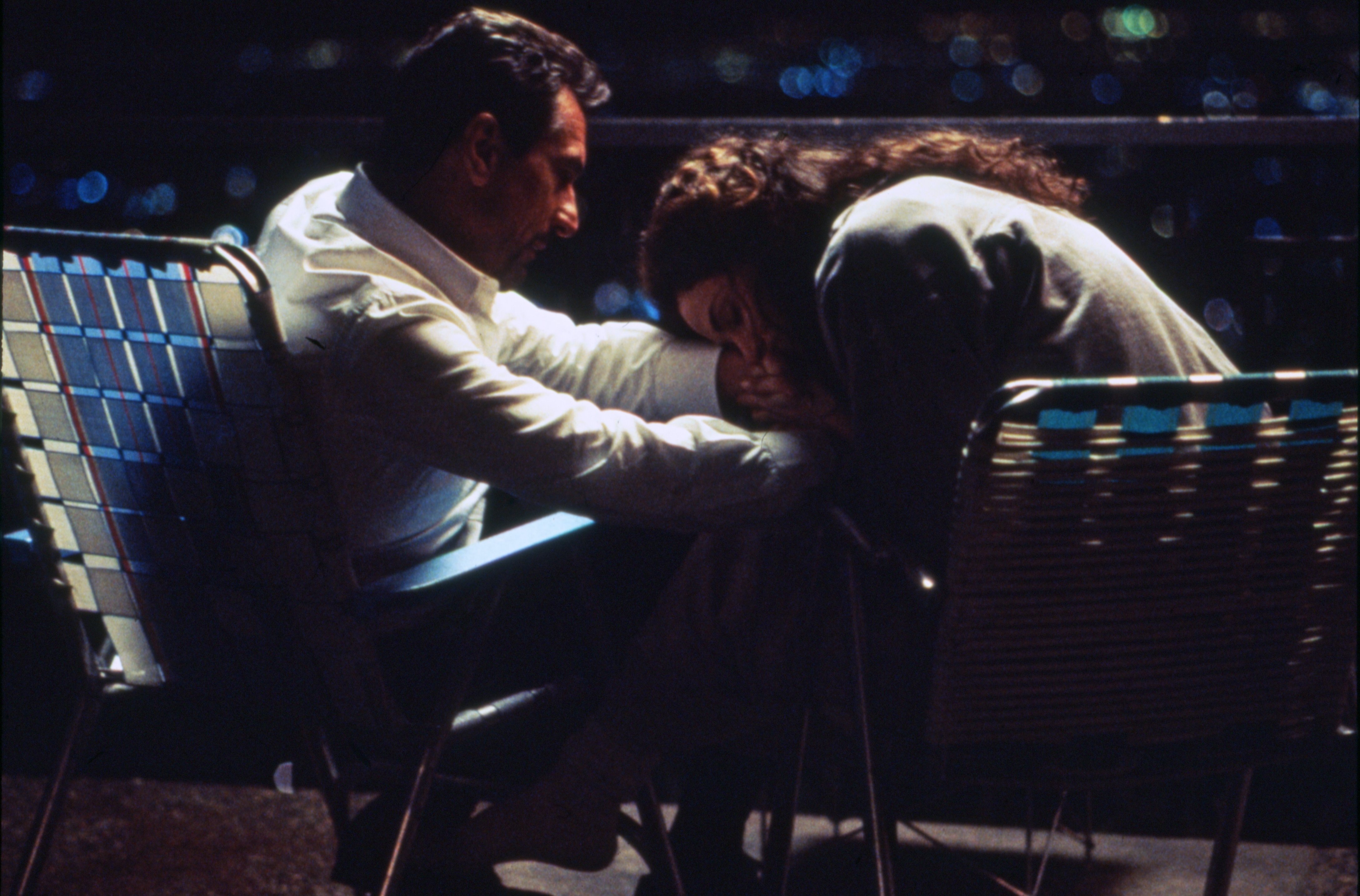
"Camera operator Gary Jay, first camera assistant Duane Manwiller, a small electrical crew and I went out on the terrace to shoot tests and plates towards the east, south and west for specific compositions pre-determined with the director," Spinotti explains. "I basically shot the skies at T2 on Primo lenses, pushed one stop and shooting at 4 frames per second. I then shot the city lights at 12 frames per second, pushed one stop at T2. Then with simple lighting, and again with specific camera angles and heights, we shot two stand-ins against greenscreen. We then moved to post-production.
"At Encore Video we put together a number of shots that combined background plates of the clouds, the city lights and sky. [They were shot with varying focal lengths], say, a 100mm and a 50mm lens, creating a strong, romantic pictorialism. We also composed using more traditional combinations of lenses. The two profile side shots which carry focus from the foreground characters to the background seem to be a visual key that really delivers what the scene has to sell."
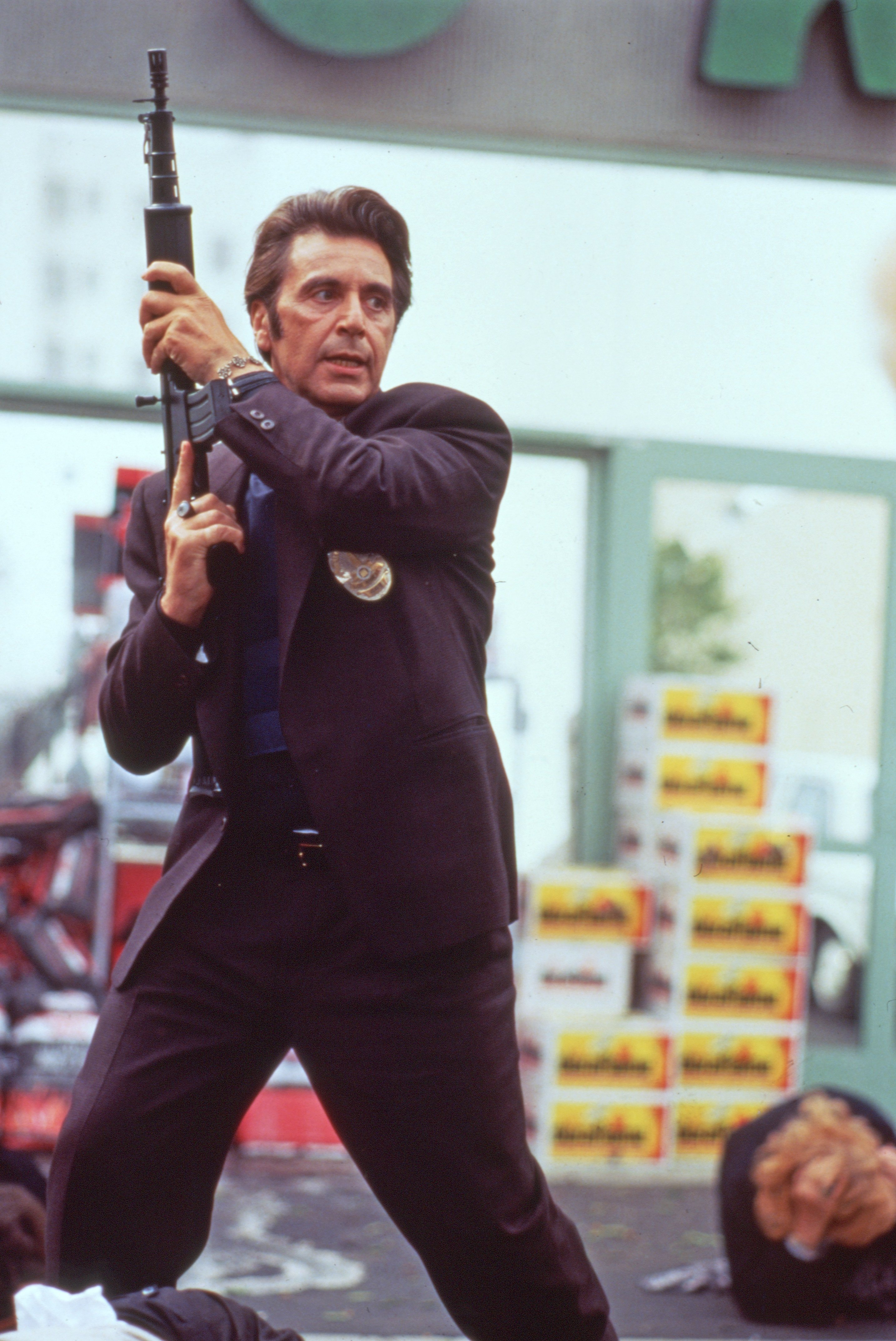
Mann wanted to photograph the actors against greenscreen at the actual location on both nights of scheduled shooting. To control the light coming from the city and the house behind, Spinotti first lit the actors without a greenscreen at a level of T4.7 in order to maintain some sharpness on their faces. The greenscreen was then brought in and lit to key level before the crew was to shoot.
A similar approach was taken with a sequence shot atop a high terrace overlooking Pacific Palisades at dusk. "The advantage [in using the digital process] is quite evident," Spinotti points out. "You can go through a number of takes to have the best performance from the actors, without a change in the brightness of the backgrounds.
"On Heat, we had plenty of opportunity to capture the majestic backgrounds of the city at night. In another scene, Lieutenant Hanna walks to a downtown hotel where a prostitute has been murdered. We achieved the first part, which takes him to the dead body in an alley behind the hotel, with a dolly shot employing a 50mm high-speed lens at T1.4. In that wide shot, he kneels down by the body, which is covered by a yellow plastic police bag. He has dialogue with a forensics expert who is also kneeling beside the body. Towering in the background are the tall downtown buildings. A helicopter hovers above them with a search light glaring behind the actors. [To cover the dialogue] we then used a two-camera setup over each actor's shoulders, with two zooms at almost 180 degrees."
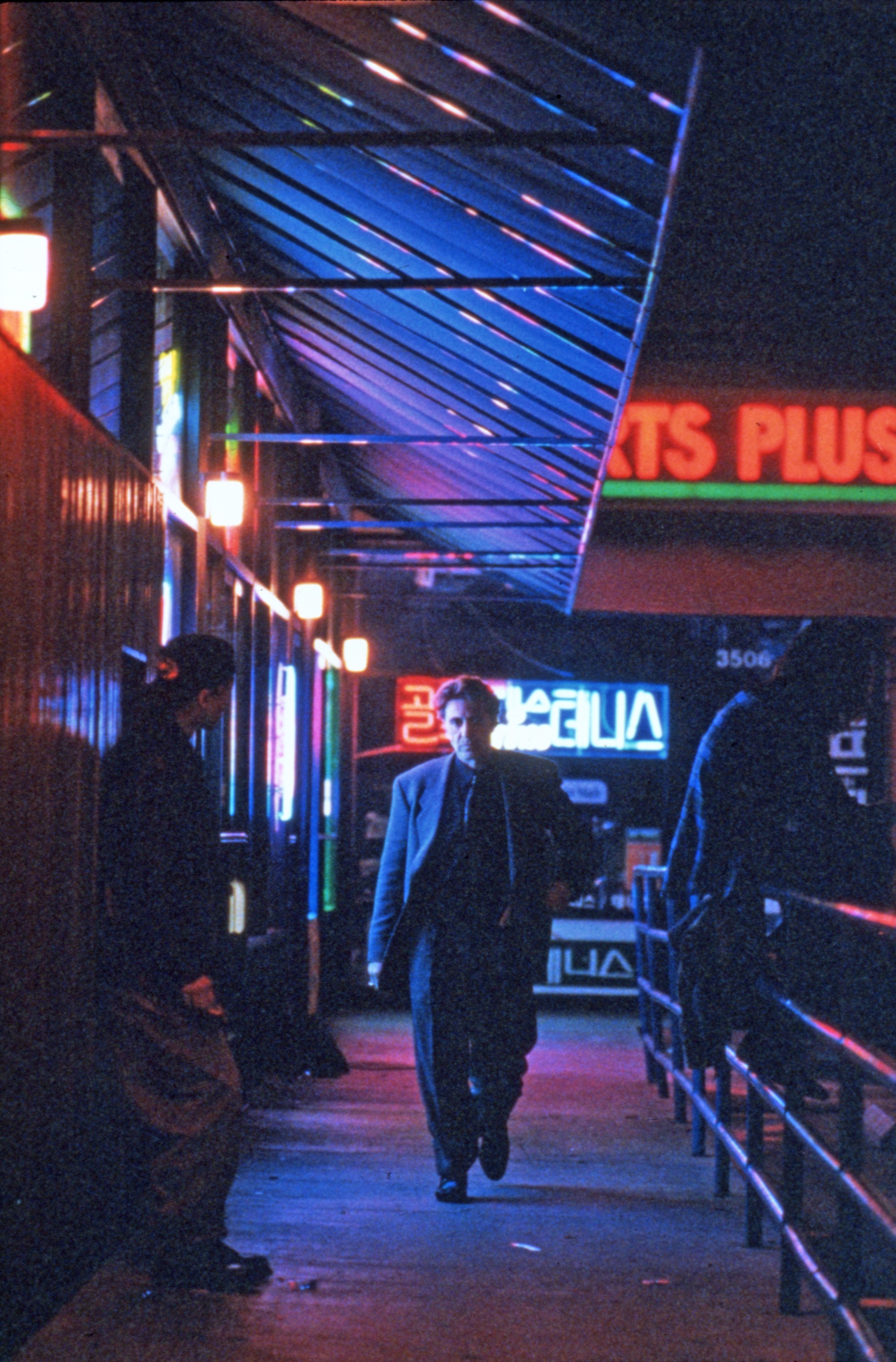
Detailing the lighting setup for the sequence, Spinotti explains, "In the back alley, gaffer Jim Grce and I decided to install a Dino light at a high angle on a Condor with a metal-halide green gel pack and a diffusion frame in front. The Condor hovered above the hotel building high out of frame for the wide master dolly at T1.4 on the 50mm lens. Only two bulbs were lit. When we moved to the zoom coverage, the Condor was considerably lower and all 24 bulbs were now lit, so that our light meter read T5.6 for the zooms without any color temperature change. Likewise, two Mini-Brutes with diffusion were placed on the ground behind a honeycomb frame to add a white key light to the faces of the actors with the proper cross angle. These lights also operated on a single bulb for the wide master, and with all nine lights for the zoom coverage."
Toward the end of the film, Hanna chases and stops McCauley on a freeway. For this scene, in which the cop comes face to face with his criminal nemesis as squad car lights flash all about them, the glow of sodium-vapor freeway lights was reproduced by a Dino light set low on a dimmer and aimed through a Nightsun diffusion frame. The big unit was parked well out of camera range on a side street running parallel to the freeway. A Steadicam move (executed by operator Jim Muro and assistant Chris Mosley) then tracked Hanna getting out of his car and walking to McCauley's vehicle. "The T2.0 75mm lens gave the feeling of a video newsreel camera covering some gritty police activity," Spinotti describes, "especially with that single yellow source hanging above McCauley's deadly-looking black car parked on the street."
Cut to a modern Los Angeles diner, where we next find Hanna and McCauley having coffee together. The background set is a sober but elegant black-and-white design. De Niro and Pacino are seated at a table facing one another in a tense confrontation. "We photographed them at the same time, with the two cameras barely missing each other," the cinematographer recalls. "We lit them with a very simple pattern: a Chinese lantern on top between the two, and a 10K with a Chimera and honeycomb for each actor just out of camera range as a three-quarter key. We added a little fill and a Dedolight over their eyes. Their great acting did the rest."
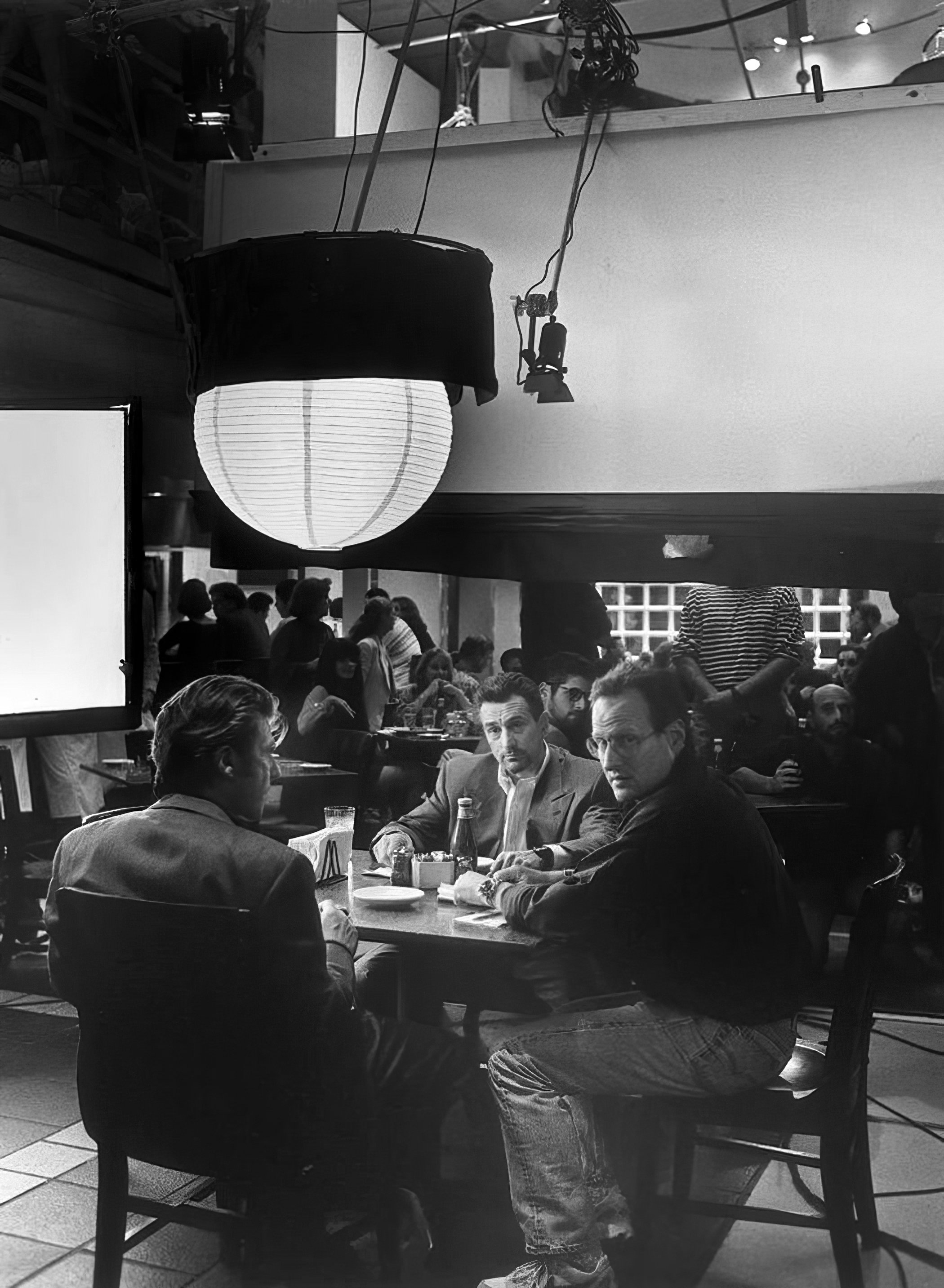
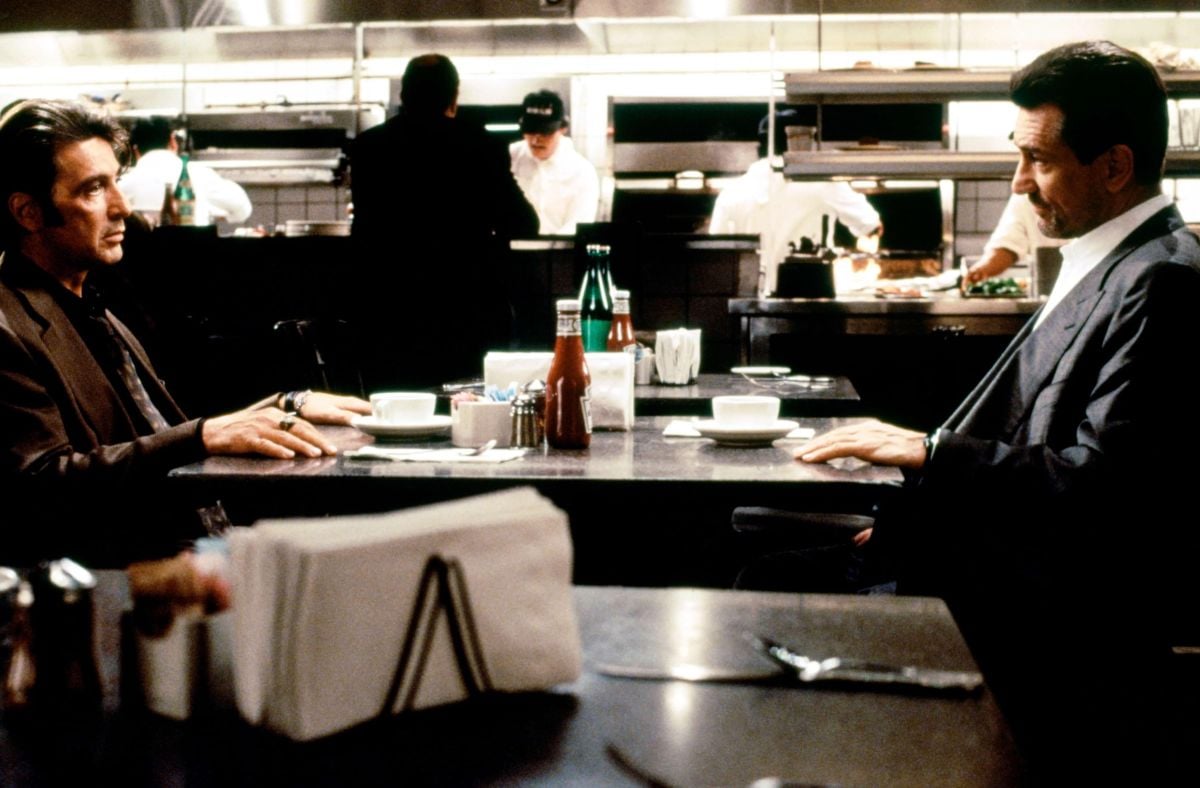
Spinotti was later invited to become a member of the ASC, and was honored with the Society's Lifetime Achievement Award in 2012.
He earned Academy Award nominations for his work in the films L.A. Confidential and The Insider (the latter also directed by Michael Mann).
Digital Effects Add Visual Flash to Heat
Creating the final sequence in Heat involved digital compositing, as Lieutenant Hanna (Al Pacino) chases master criminal Neil McCauley (Robert De Niro) into a wide open area at the head of an LAX landing strip. The scene becomes a cat-and-mouse game which ends in a hail of gunfire as passenger jets scream overhead. Neil Krepela, a visual effects supervisor at Boss Film who has worked on several science-fiction epics including The Empire Strikes Back, oversaw Heat's greenscreen principal and background plate photography.
"For that scene, director Michael Mann was very, very concerned about the composition of his actors, most notably De Niro, against the landing lights in the background," Krepela indicates. "The whole idea is that the lights provide a brilliant background that De Niro tries to use like the sun — as a blinding shield he can emerge from to shoot Pacino. What Mann wanted was this compressed feeling, cheating reality, because it's a heightened moment in the story. To accomplish that, we ended up shooting the greenscreen and the background with two different focal-length lenses."

Compounding the problem further, most of this final confrontation was filmed with two cameras, one a motion-controlled pan-and-tilt gear head and the other wild without motion-control. I personally operated the Kuper RTMC130 motion-control software using stepper motors and Centent drivers provided by Boss. A follow-focus control proved unnecessary since the backgrounds would later be photographed at infinity to maintain a crisp sharpness between the foreground action and the background, both filmed using long lenses. The pan-and-tilts were operated remotely by a hothead, with the movement information encoded into Kuper software as separate takes. These were saved onto floppy disks for later playback when, months later, the background plates were shot in the same location. This time delay enabled director Mann to obtain a final cut of the scene, so only those selected takes needed to be digitally composited.
A bloop light was triggered on the first frame of each take to use as a synching point for the foreground and background elements. Takes were made at 30, 60 and 120 frames per second in order to create the heightened effect Mann desired.
"The motion-control shots weren't used in the final cut," Krepela confesses, "but a number of the second pan-and-tilt moving camera shots were. To replicate the very long-lens look that Michael liked of the landing lights behind his actors, we shot the plates with a somewhat shorter focal-length lens, with the intention of blowing that up in postproduction, tracking the greenscreen moves and applying that tracking to the background to obtain a married-up element. Dante [Spinotti] used anywhere from a 100 to 180mm lens on the greenscreen De Niro elements.

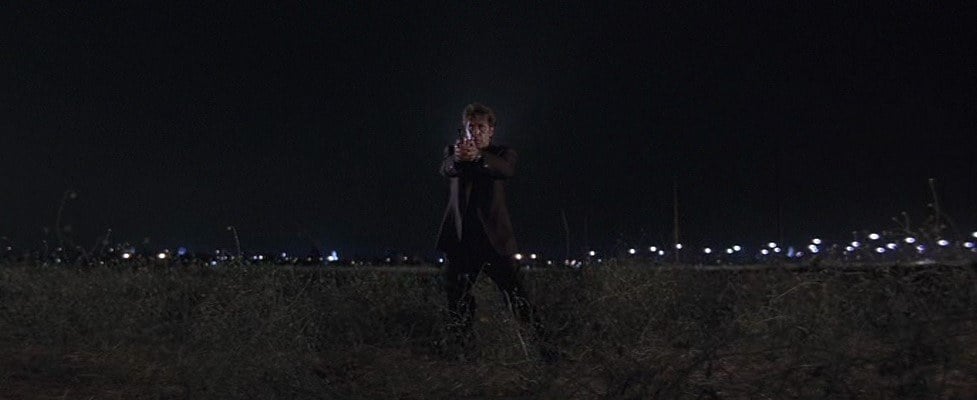
"Ironically, it was all shot high-speed, but the slow-motion look again wasn't what Michael wanted, so we ended up skip-printing a lot of that film back to 30 fps. [That process] actually enhanced the action; it added a sharpness, especially when the bullet hits go off and the blood bags burst — you see that a little more clearly."
Continues Krepela, "To compound that, we digitally enlarged the background to approximate the look of a 300mm lens."
Since the rest of the sequence was shot on 5298, pushed one stop (Spinotti's formula), the background plates could be shot on 5293 and processed normally, which kept the grain from becoming too apparent under such a large lens. According to Krepela, after the footage was enlarged, it would more resemble the pushed 5298.
Boss Film's post-production crew then had to realign the runway shootout sequences, without being able to re-track the selected take with the motion-controlled camera move. Explaining the procedure, Krepela says, "We tracked the foreground object and put that tracked move into the background. We first did a bunch of temps at Editel in low-resolution for a screening of Heat. The negative was transferred in telecine in D1 and put into a Quantel Henry; we then tracked and composited all of the shots on Dl. The Henry has tracking systems built into it, quite like the Flame; they basically assign a target point on the background greenscreen. We just placed little green tape cross-marks on the screen. The software recognizes these and continues to track and record information on each movement very, very accurately. Then you just apply that to your background move once you've sized it, and it locks right in. The result was taken to Pacific Title, where they up-rezzed it and output it onto film. We did three re-dos on that because the film was being cut as we were preparing these temps for the preview."
The other advantage to using digital tracking over motion control is that one doesn't need to scale the move when changing to different focal-length lenses. Krepela was dealing with a flat digital image and simply copied whatever the foreground move did over to the background.
"Motion control really wouldn't have worked using a longer lens," Krepela concludes. "The test we did ascertained that. To finish the final shot, we will digitize everything at Pacific Title at a very high-resolution. We'll blow it up, and again, move it around, hoping to match the 5298 background." — LPR
